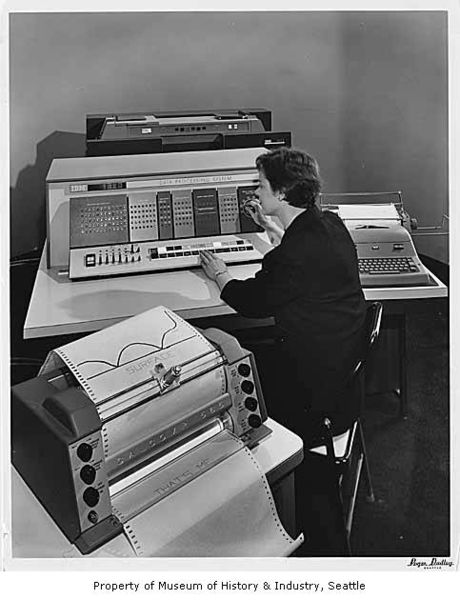The IBM 7090 is a second-generation transistorized version of the earlier IBM 709 vacuum tube mainframe computer that was designed for "large-scale scientific and technological applications". The 7090 is the fourth member of the IBM 700/7000 series scientific computers. The first 7090 installation was in December 1959. In 1960, a typical system sold for $2.9 million or could be rented for $63,500 a month.
IBM 7151 Console Control Unit for 7090
IBM 7151-2 Console Control Unit for 7094 showing additional index register displays in a distinctive extra box on top. Note "Multiple Tag Mode" light in the top center.
An IBM 7090 at the NASA Ames Research Center in 1961, with the director of Ames and several IBM employees. The IBM 7151 Console Control Unit is on the right with two banks of IBM 729 magnetic tape drives in back. The IBM 711 card reader is in front of the man and woman at right.
Dual 7090s at NASA during Project Mercury.
A transistor computer, now often called a second-generation computer, is a computer which uses discrete transistors instead of vacuum tubes. The first generation of electronic computers used vacuum tubes, which generated large amounts of heat, were bulky and unreliable. A second-generation computer, through the late 1950s and 1960s featured circuit boards filled with individual transistors and magnetic-core memory. These machines remained the mainstream design into the late 1960s, when integrated circuits started appearing and led to the third-generation computer.
IBM 1620
TRADIC






